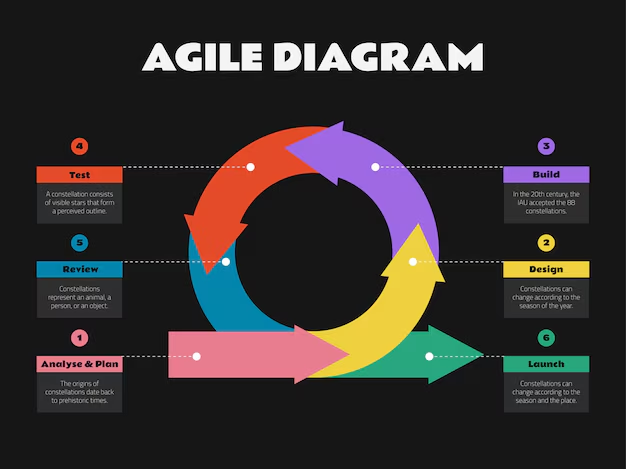Introduction to SDLC
The Software Development Life Cycle (SDLC) is a fundamental framework that guides software development teams through the various stages of creating and maintaining software applications. Moreover, this structured approach ensures that software projects are planned, designed, developed, and deployed in a systematic manner, ultimately leading to the delivery of high-quality software solutions. Furthermore, understanding the different phases of the SDLC is crucial for software professionals, as it helps them navigate the complexities of the development process and ensures the successful completion of their projects. Consequently, adhering to the SDLC enables teams to manage their projects more effectively and achieve their objectives efficiently.
What is the SDLC?
The SDLC is a comprehensive process that encompasses the entire lifecycle of a software application, from the initial planning and requirements gathering to the final deployment and maintenance. This methodical approach provides a clear roadmap for software development teams, helping them to identify and address potential challenges at each stage of the process. By following the SDLC, organizations can ensure that their software projects are delivered on time, within budget, and with the desired functionality and quality.
Importance of the SDLC
The SDLC is essential for software development because it ensures systematic development, enhances project management, improves quality, facilitates collaboration, and supports maintenance and scalability. Firstly, the SDLC provides a structured framework that guides the development team through the various stages of the software development process, ensuring that each phase is completed in a systematic and organized manner. Additionally, it helps software development teams to effectively manage project timelines, resources, and budgets, thereby reducing the risk of project delays or cost overruns.
Furthermore, by following the SDLC, teams can identify and address issues early in the development process, leading to the delivery of high-quality software products. Moreover, the SDLC promotes collaboration among cross-functional teams, including developers, designers, project managers, and stakeholders, ensuring that everyone is aligned and working towards the same goals. Lastly, the SDLC includes a maintenance phase, which enables software development teams to effectively maintain and update their applications over time, ensuring their long-term viability and scalability.
The Different Phases of the SDLC
The SDLC typically consists of seven distinct phases, each with its own set of activities and deliverables. These phases are:
Phase 1: Planning
The planning phase is the foundation of the SDLC, where the software development team lays the groundwork for the project. During this phase, they:
- Identify the project’s goals, objectives, and scope
- Assess the feasibility of the project, considering factors such as budget, timeline, and resources
- Develop a detailed project plan, including milestones, tasks, and responsibilities
- Establish communication and collaboration protocols for the development team
Phase 2: Requirements Gathering
In the requirements gathering phase, the software development team works closely with stakeholders, including end-users, to understand the specific needs and expectations for the software application. This phase involves:
- Conducting interviews, workshops, and surveys to gather comprehensive requirements
- Documenting the functional and non-functional requirements, such as user stories, use cases, and system specifications
- Prioritizing the requirements based on their importance and complexity
- Obtaining stakeholder approval and buy-in for the requirements
Phase 3: Design
The design phase is where the software development team translates the gathered requirements into a detailed plan for the application’s architecture, user interface, and technical components. This phase includes:
- Developing the overall system architecture, including the software’s components and their interactions
- Designing the user interface, ensuring it is intuitive and user-friendly
- Specifying the data structures, algorithms, and other technical details
- Creating prototypes and wireframes to validate the design with stakeholders
Phase 4: Development
The development phase is where the actual coding and implementation of the software application takes place. During this phase, the software development team:
- Writes the source code, following best practices and coding standards
- Integrates the various components of the system, ensuring they work together seamlessly
- Continuously tests the code to identify and fix any issues or bugs
- Collaborates with the design and testing teams to ensure the application meets the specified requirements
Phase 5: Testing
The testing phase is crucial for ensuring the quality and reliability of the software application. During this phase, the software development team:
- Develops a comprehensive testing plan, including unit tests, integration tests, and end-to-end tests
- Executes the planned tests, identifying and documenting any defects or issues
- Works with the development team to fix the identified issues and ensure the application meets the specified quality standards
- Performs user acceptance testing to validate that the application meets the stakeholders’ requirements
Phase 6: Deployment
The deployment phase is where the software application is made available to end-users. During this phase, the software development team:
- Prepares the production environment, ensuring that all necessary infrastructure and configurations are in place
- Deploys the software application to the production environment, following a well-defined deployment process
- Provides training and support to end-users to ensure a smooth transition to the new system
- Monitors the application’s performance and addresses any issues that arise during the initial deployment
Phase 7: Maintenance
The maintenance phase is the final stage of the SDLC, where the software development team ensures the ongoing health and performance of the application. During this phase, the team:
- Monitors the application’s performance and addresses any issues or bugs that arise
- Implements updates and enhancements to the application, based on user feedback and changing requirements
- Performs routine maintenance tasks, such as software updates, backups, and security patches
- Collaborates with stakeholders to plan and execute future upgrades or feature enhancements

Best Practices for Each Phase of the SDLC
To ensure the successful implementation of the SDLC, software development teams should adhere to the following best practices for each phase:
Planning Phase
- Clearly define the project’s goals, objectives, and scope
- Conduct a thorough feasibility analysis, considering technical, financial, and organizational factors
- Develop a detailed project plan with well-defined milestones and timelines
- Establish effective communication channels and collaboration protocols
Requirements Gathering Phase
- Engage with stakeholders to understand their needs and expectations
- Document the functional and non-functional requirements in a clear and concise manner
- Prioritize the requirements based on their importance and complexity
- Obtain stakeholder approval and buy-in for the requirements
Design Phase
- Develop a comprehensive system architecture, considering scalability and maintainability
- Design a user-friendly and intuitive interface, aligned with the user requirements
- Specify the technical details, such as data structures, algorithms, and interfaces
- Create prototypes and wireframes to validate the design with stakeholders
Development Phase
- Follow best coding practices and adhere to industry standards
- Implement continuous integration and continuous deployment (CI/CD) processes
- Conduct regular code reviews to ensure code quality and maintainability
- Integrate the various components of the system, ensuring seamless functionality
Testing Phase
- Develop a comprehensive testing plan, covering unit tests, integration tests, and end-to-end tests
- Automate the testing process to improve efficiency and consistency
- Collaborate with the development team to quickly address and fix any identified issues
- Perform user acceptance testing to validate the application’s compliance with requirements
Deployment Phase
- Prepare the production environment, ensuring all necessary infrastructure and configurations are in place
- Follow a well-defined and documented deployment process to minimize the risk of issues
- Provide comprehensive training and support to end-users to ensure a smooth transition
- Monitor the application’s performance and address any issues that arise during the initial deployment
Maintenance Phase
- Implement a proactive monitoring and maintenance strategy to identify and address issues
- Regularly update the application with security patches, bug fixes, and performance improvements
- Collaborate with stakeholders to plan and execute future upgrades or feature enhancements
- Maintain comprehensive documentation to facilitate future maintenance and updates
What is an Example of an SDLC Methodology?
One of the most widely used SDLC methodologies is the Agile methodology. Agile is an iterative and incremental approach to software development that emphasizes flexibility, collaboration, and continuous improvement. Unlike traditional waterfall-based SDLC models, Agile breaks down the development process into smaller, manageable iterations, known as sprints, where the development team works on a specific set of features or requirements.
The key characteristics of the Agile SDLC methodology include iterative development, adaptive planning, continuous delivery, cross-functional teams, customer collaboration, and rapid response to change. Firstly, iterative development involves creating the software in short cycles, with each cycle delivering a potentially shippable increment of the product. Additionally, adaptive planning ensures that the development team regularly reviews and adjusts the project plan based on feedback and changing requirements.
Moreover, continuous delivery allows the software to be delivered frequently to customers or stakeholders, enabling early and consistent feedback. Furthermore, Agile teams consist of individuals with diverse skills and expertise who work collaboratively to achieve project goals. Close collaboration with customers and stakeholders is another hallmark of Agile, ensuring their involvement throughout the development process. Lastly, Agile encourages a rapid response to change, enabling the team to quickly adapt to new requirements or market conditions. By following the Agile SDLC methodology, software development teams can deliver high-quality software products more efficiently while also improving communication, collaboration, and customer satisfaction.
Common Challenges in the SDLC
The SDLC provides a structured framework for software development, but software development teams often encounter several common challenges. Scope creep occurs when new requirements or features are constantly added during the development process, impacting the project’s timeline, budget, and quality. Communication breakdowns arise from ineffective communication between the development team, stakeholders, and end-users, leading to misunderstandings and delays.
Resource constraints, such as a lack of skilled personnel, funding, or infrastructure, can hamper the development process. Moreover, a lack of stakeholder engagement makes it difficult to gather accurate requirements and obtain necessary approvals. Furthermore, Testing challenges, including inadequate testing or the inability to identify and address issues early, can result in low-quality software. Additionally, failing to plan for the long-term maintenance and scalability of the software application can lead to technical debt and future challenges. To overcome these challenges, software development teams should adopt best practices like effective project management, clear communication protocols, and a focus on continuous improvement throughout the SDLC.
Conclusion
The phase of the SDLC is a crucial framework that guides software development teams through the various stages of creating and maintaining software applications. By thoroughly understanding the different phases of the SDLC and consistently adhering to best practices, software development teams can ensure the successful delivery of high-quality software products that effectively meet the needs of their stakeholders and end-users. Consequently, this structured approach not only enhances project management and product quality but also facilitates better collaboration and communication among team members.
To learn more about implementing the SDLC in your software development projects, read our article Value Stream Mapping Analysis for Operational Excellence.









Leave a Reply